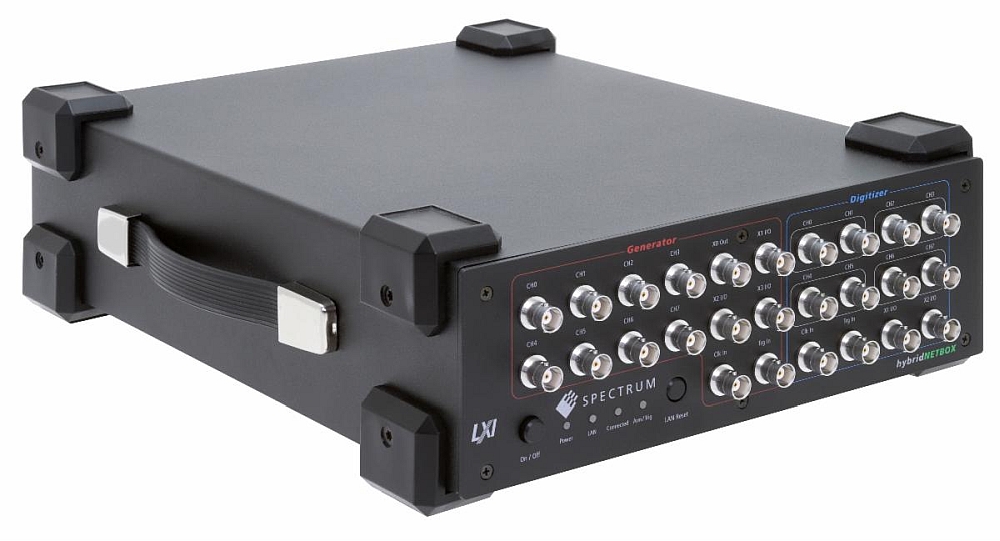- Spectrum Instrumentation offers the Hybridnetbox, a new instrumentation platform for applications that require the generation of arbitrary waveforms and simultaneous signal acquisition.
- Six models are available offering 40, 80, and 125 MS/s sampling and output clock rates on two, four, or eight channels for signal generation and acquisition.
- Each channel offers 16-bit resolution with bandwidths up to 60 MHz.
The LXI Hybridnetbox Series portable LXI instruments are designed for applications that require accurate and simultaneous waveform generation and signal acquisition in manual, automated or remotely controlled applications.
Their ability to simultaneously create and acquire electronic signals makes these LXI instruments particularly well suited for automated test systems operating in closed loop or stimulus-response mode. In particular, these instruments can reproduce and capture radar, sonar, lidar or ultrasound “echo” signals. Equipped with several channels, they can test equipment operating networks of transmitters and receivers.
All channels are synchronized, sharing a common clock and trigger signal. The arbitrary signal generation channels can produce a variety of waveforms with signal amplitudes up to ±6 V in 50 ohm, or ±12 V in high impedance.
The digitizer’s input channels offer variable input ranges from ±200 mV to ±10 V, with programmable offset and selectable input impedance (50 ohm and 1 megaohm). Both single and differential measurement modes are available.
In addition to the digitizing and signal generation channels, the front panel of each Hybridnetbox includes several digital I/O connectors to integrate the units into a test system.
Since the Hybridnetbox instruments are LXI-compliant, they simply need to be connected to a PC or corporate network via the rear panel Gbit Ethernet port. Each unit includes SBench 6 control software for signal generation, acquisition, display, processing, storage and reporting.






